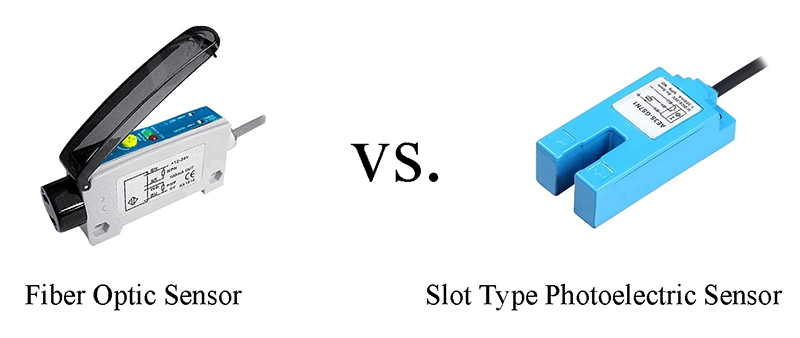Difference between Fiber Optic Sensor and Photoelectric Sensor
Optical fiber sensor is an amplifier-separated photoelectric sensor. There are also through-beam type, retro-reflection type and diffuse reflection type in optical fiber sensor. The function of fiber optic sensors is somewhat similar to that of photoelectric sensors, which can detect the presence of objects from a long distance. The difference is that the size of the optical fiber sensor is smaller than that of the photoelectric sensor, and the spot diameter is much smaller than that of the photoelectric sensor. In addition, the optical fiber sensor is composed of optical fiber and optical fiber amplifier, which makes it suitable for harsher environments, such as oil pollution rings, high temperature, etc.
A photoelectric sensor is an optically controlled switch that can automatically open and close at a specified position. The photoelectric sensor has the characteristics of long sensing distance, easy adjustment of sensing distance, and non-contact detection. Therefore, in some scenarios, photoelectric sensors are often used to detect the existence of objects at a distance.

Features
Optical fiber sensor
- The detection distance is long.
- There are few restrictions on the detection object. The detection principle is based on the shading and reflection caused by the detection object, so unlike the proximity sensor, which restricts the detection object to magnetic permeability, it can detect almost all objects such as glass, plastic, wood, and liquid.
- Short response time. The light itself is high-speed, and the circuit of the sensor is composed of electronic parts, so it does not include mechanical working time, and the response time is very short.
- High resolution. High resolution can be achieved by concentrating the projected light beam into small spots through advanced technology, or by forming a special light-receiving optical system. Detection of tiny objects and high-precision position detection are also possible.
- Easy to adjust. In the type of projected visible light, the projected light beam is visible to the eyes, which is convenient to adjust the position of the detected object.
- Color discrimination can be realized. The reflectivity and absorptivity of the light formed by the detection object are different according to the wavelength of the projected light and the color combination of the detection object. Using this property, the color of the detection object can be detected.
Photoelectric sensor
- The detection distance is long. Compared with the inductive proximity sensor, a very long detection distance can be obtained. For example, the detection distance of the through-beam sensor can reach tens of meters, and the reflection has been from a few centimeters to a few meters. Because it is non-contact detection, it will not damage the measured object, nor is it affected.
- Wide range of detection objects. Because the detection is based on the reflection and light transmission of the detection object, it can be detected whether it is metal, even glass, rubber, wood, liquid, etc.
- Fast response speed. The detection medium itself is high-speed and does not contain mechanical actions, so a very high detection speed can be obtained.
- High resolution. Light travels in a straight line and has a short wavelength, so it has high resolution and is suitable for small objects and high-precision position detection.
- It is easy to obtain a regular detection area. Optical systems such as lenses are used, which can easily condense, diffuse and refract light. Corresponding to different detection objects and different use environments, products with a certain detection area can be appropriately selected.
- Not affected by magnetic field and vibration. The detection switch is generally installed in places with strong magnetic field and vibration. Essentially, the photoelectric sensor is rarely affected by it, so it can operate reliably.
- Use the characteristic detection of light. It can do the selection detection of color code and shape feature.
- Long service life. Because it is non-contact detection, it has a long service life, especially when light-emitting diodes are used as light sources.
Applications
Optical fiber sensor
Fiber optic sensors can be embedded in concrete, carbon fiber reinforced plastics, and various composite materials to test stress relaxation, construction stress, and dynamic load stress to evaluate the structural performance of bridges during short-term construction phases and long-term operating conditions. In the power system, parameters such as temperature and current need to be measured, such as temperature detection in the stator and rotor of high-voltage transformers and large motors. Since electrical sensors are susceptible to interference by electromagnetic fields, they cannot be used in such occasions, and only fiber optic sensors can be used.
Photoelectric sensor
Photoelectric sensors can be used to measure the intensity of light and physical quantities such as temperature, light transmittance, displacement and surface state of objects. Photoelectric sensors are not only widely used in the civilian industry, but also play an important role in the military.

